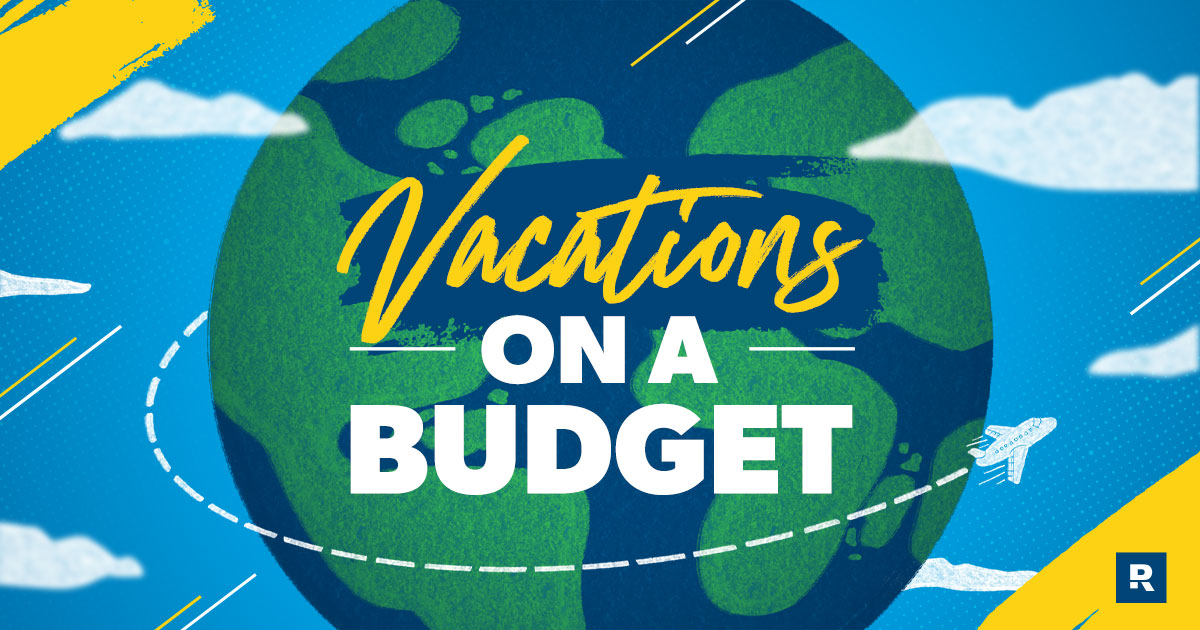
I love planning vacations. I could probably do it for a living if I didn’t have the job I do now.
But vacations can be expensive.
With a little research and budgeting, planning a trip can actually give you a sense of relief and control that makes the getaway much more fun. So, here are seven steps to plan a trip on a budget:
1. Plan your trip budget.
This is the most important step and will affect the rest of your vacation planning process. Determine how much you want to spend on everything from hotels and gas to souvenirs and meals. It doesn’t have to be a ton of money—there are many ways to plan an affordable vacation or staycation.
You can use my free Vacation Budget Worksheet to plan out each category. As you’re planning, if you decide something is too expensive, scale it back or cross it off the list.
2. Choose the top places you’d like to go.
On the surface, this may seem like the easiest (and most fun) part of your planning. But here are some questions you need to ask:
- Which destinations fit within my budget?
- Does my destination affect whether I plan it myself or hire a travel agent?
- Will I drive or fly?
Did you know a bunch of popular U.S. cities actually have a lot of free and super cheap things to do? Check out my list of the 10 cheapest places to travel.
3. Research flights and dates.
As you’re planning your trip, know that certain times of the year are cheaper to travel than others. Everyone knows flights will be more expensive around a holiday, but there are lots of other factors that determine how much you’ll pay for that flight or hotel. Do your research, play around with dates, and decide how many days you can afford to be there. I put my top 10 travel booking hacks in this video:
4. Look for deals.
You can find websites all over the internet that will help you score deals on hotels, amusement park tickets, airline travel, and so on. Here are some great resources:
- Google Flights
- Groupon Getaways
- Tripadvisor
- Expedia
- Scott’s Cheap Flights
- Kayak
Make sure you look for bargains after you set the budget—for two reasons. First, once you know where you’re going and how much you want to spend, you’ll be able to look for specific savings. Second, it’s a big morale boost to see that you’re coming in under budget when you find a deal.
5. Start saving up.
Here’s where the rubber meets the road! By working and saving up the money now, you won’t have to deal with payments or credit card interest rates after you come home. Use your trip as motivation when you’re pulling a double shift or taking freelance work. Print out an image from your destination (like a beautiful beach or snowy mountain scene) or save it as your phone screen as a reminder of what you’re working toward.
6. Create your itinerary.
As you’re saving up for your trip, you can also start scheduling which days you’ll do what activities. What excursions, tours, and sightseeing will you do? What reservations do you need to make in advance? If you do a lot of running around one day, do you need to block off the next day for some rest and relaxation? I think it’s fun to go ahead and book some things in advance. I love knowing it’s paid for and checking it off my list. Use Yelp or Tripadvisor to research reviews and pricing to make sure you won’t blow your trip budget.
7. Go and enjoy your trip!
Nothing is worse than paying for a vacation for months after it’s over. But if you take these steps to plan and budget ahead of time, you’ll avoid that headache. Then, when you’re on your trip, live it up! Relax and enjoy.
These seven steps will ensure the bills for your vacation don’t follow you home so you can leave the beach at the beach. The reason more people don’t plan this way is that they want instant gratification. They want to enjoy now and worry about how to pay later. That leads to overspending, and it creates stress and regret.
Vacations are meant to be fun, not stressful. So make a budget and have a plan. My favorite way to budget is with Every Dollar so Start your free trial today!